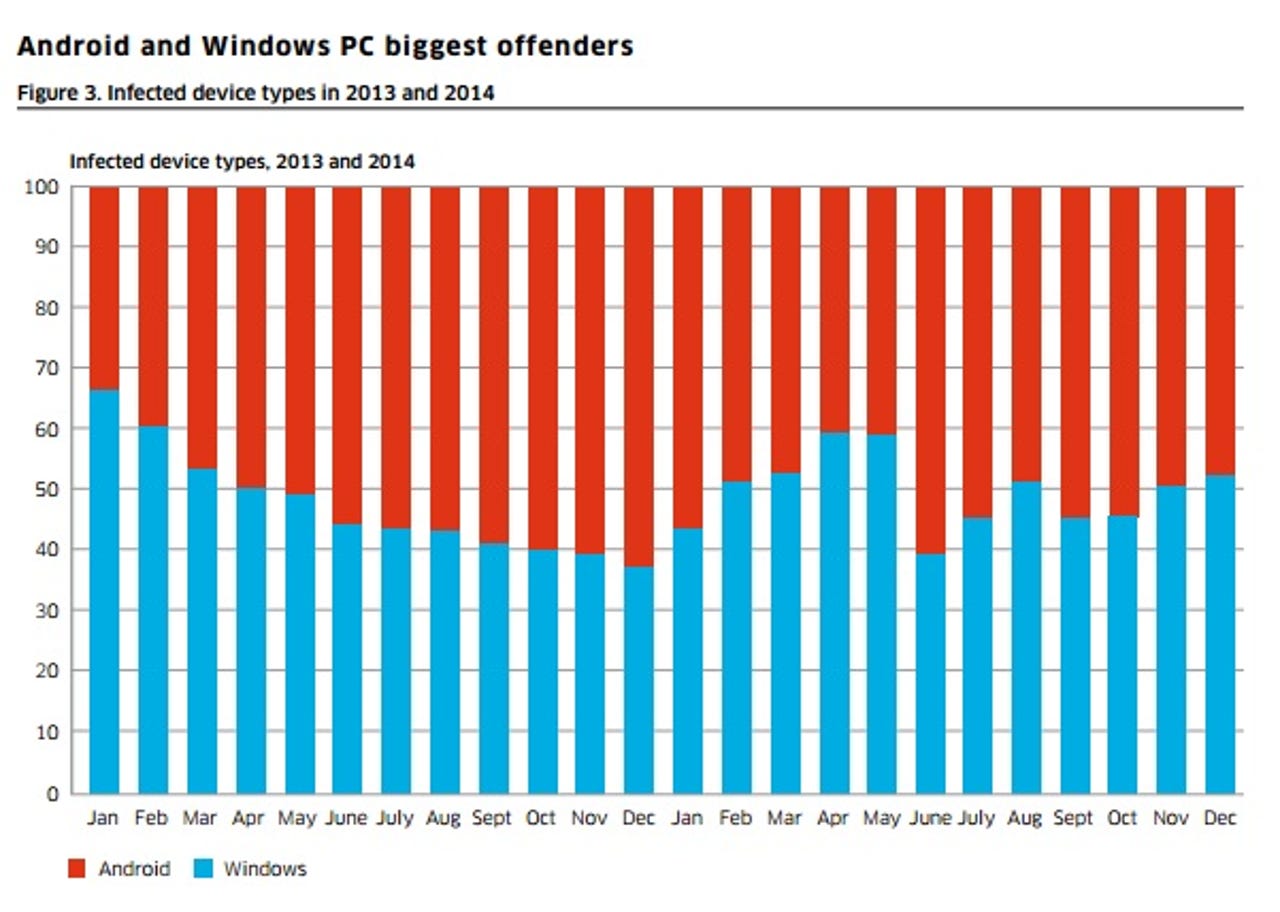16 million mobile devices hit by malware in 2014: Alcatel-Lucent

French telecommunications equipment company Alcatel-Lucent has published a report compiled by its Motive Security Labs division, which found that malware infections in mobile devices increased by 25 percent in 2014, compared to a 20 percent increase in 2013.
According to Alcatel-Lucent, the current malware infection rate for mobile devices stands at 0.68 percent, a figure which the company's Motive Labs used to estimate that around 16 million devices worldwide were likely to have been infected by malicious software as of the end of 2014.
Mobile spyware was identified as being on the increase, according to the report, with six of the mobile malware top 20 list now made of mobile spyware. These are apps that are used to spy on the phone's owner, and can track a phone's location, monitor incoming and outgoing calls and text messages, monitor emails, and track a phone user's web browsing.
The Motive Security Labs malware report - H2 2014, which looked at all popular mobile device platforms, found that Android devices have caught up with Windows laptops in terms of malware attack numbers, with infection rates between Android and Windows devices split 50/50.
Less than 1 percent of infections came from iPhone and BlackBerry smartphones. However, new vulnerabilities, such as the "Find My iPhone" exploit discovered last year, have emerged in the past 12 months, showing that Apple is not immune from malware threats.
According to Alcatel-Lucent, the growth in malware infections has been aided by mobile device owners not taking "proper" device security precautions. A recent Motive Security Labs survey found that 65 percent of the security platform subscribers expected their service provider to protect both their mobile and home devices.
Motive's malware report found that infection rates in residential networks also rose significantly in 2014, with malware found in 13.6 percent of residences, an increase of 5 percent over 2013.
The report also found that, somewhat counter-intuitively, consumers who avoid shopping online out of fear that their credit or debit card information may be stolen may, in fact, be exposing themselves to greater risk. A spate of retail payment systems security breaches in 2014 showed that malware infections are more likely to be found on cash registers or point-of-sale terminals, rather than on online store payment portals.
Alcatel-Lucent's research found that there was an increase in distributed denial-of-service (DDoS) attacks using network infrastructure components such as home routers, DSL modems, cable modems, mobile Wi-Fi hotspots, DNS servers, and NTP servers.
Additionally, the first DDOS attacks launched from mobile phones took place, suggesting how so-called "hacktivism" movements against the mobile infrastructure might be launched in the future, the company said.
Alcatel Lucent's report follows research published in January by mobile security firm Lookout, which also found that mobile malware is on the rise, particularly in terms of chargerware and ransomware.